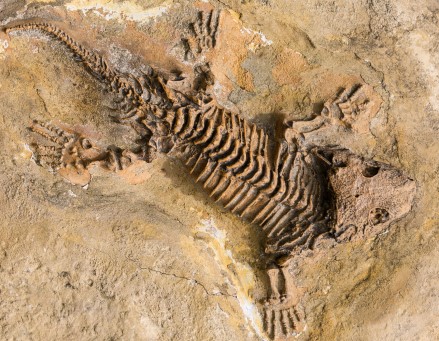- It is based on the similarities in structure and function that is observed in all organisms.
- All are made up of cells, and similar chemical compounds are present.
- This indicates that all organism may have had a common origin.
- Evolution seeks to explain the diversity of life and also to answer the question as to the origin of life, as well as its present state.
The Origin of Life
- Human beings have tried to explain how life began.- Currently held views are listed below:
- Special creation -life was created by a supernatural being within a particular time.
- Spontaneous generation life originated from non-living matter all at once. e.g. maggots arise from decaying meat.
- Steady state - life has no origin.
- Cosmozoan - life on earth originate from elsewhere, outer space.
- Bio-chemical evolution-life originated according to chemical and physical laws.
Special Creation
- The earliest idea is that of special creation which is recorded in the old testament (Genesis 1: 1-26).- It states that God created the world and all living things in six days.
Chemical Evolution
- The following is the line of thought held in this view to explain origin of life:- The composition of atmospheric gases was different from what it is today:
- There was less oxygen, more carbon (IV) oxide, hence no ozone layers to filter the ultra-violet light.
- The high solar energy reached the earth and brought together hydrogen, carbon (IV) oxide and nitrogen to make organic compounds.
- These were: hydrocarbons, amino acids, nucleic acids, sugars, amino acids and proteins.
- The proteins coalesced and formed colloids.
- Proteins and lipids formed a "cell membrane" that enclosed the organic compounds, to form a primitive cell.
- The cell was surrounded by organic molecules that it fed on heterotrophically.
- This took place in water.
- From this cell progressively autotrophs evolved.
- That were similar to blue-green algae.
- They produced oxygen and as more oxygen was evolved ozone layer formed an blocked ultra violet radiation.
- This allowed formation of present day photo-autotrophs.
Evidence for Organic Evolution
1. Fossil Records- The study of fossils is called palaeontology.
- Fossils are remains of organisms that lived in ancient times.
- Most fossils are remains of hard parts of the body such as bones, teeth, shells and exoskeletons.
- Modem man, Homo sapiens, evolved from ape-like creatures 25 million years ago.
- These evolved to upright, tool using creature called Australopithecus afarensis which had a cranial capacity of 400-500 cc.
- This evolved through several intermediates; Homo habilis and Homo erectus to modem day human.
- Main features in human evolution include bipedal posture, is an omnivore and has an opposable thumb.

A Reptile Fossil in Rock - Image Courtesy
Limitations of the Fossil Evidence
- Only partial preservation was usually possible because softer parts decayed. The fossil records are therefore incomplete
- Distortion - parts of organisms might have become flattened during sedimentation
- Subsequent geological activities e.g. erosion, earthquakes, faulting and uplifting may have destroyed some fossils
- Until about 250 million years ago, all the land masses on earth formed a single land mass (Pangaea).
- This is thought to have undergone continental drift, splitting into different continents.
- Consequently, organisms in certain regions became geographically isolated and did not have a chance to interbreed with other organisms in other regions.
- Such organisms underwent evolution in isolation and have become characteristically different from organisms in other regions.
3. Comparative Embryology
- During the early stages of development, the embryos of different vertebrates are almost indistinguishable.
4. Comparative Anatomy
- Comparative anatomy is the study of organs in different species with the aim of establishing whether the organism are related.
- Organisms which have the same basic features are thought to have arisen from a common ancestor.
- The vertebrate pentadactyl limb evolved in different ways as an adaptation to different modes of life. e.g. as a flipper in whales, as a wing in bats and as a digging hand in moles.
- Such organs are said to be homologous, i.e. they have arisen from a common ancestor but they have assumed different functions.
- This is an example of divergent evolution.
- The wing of a butterfly and that of a bird are said to be analogous. i.e. they have originated from different ancestors but they perform the same function.
- This is an example of convergent evolution.

